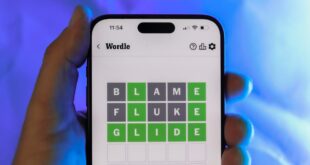Between the aurora borealis making multiple appearances, the full solar eclipse and planet parades, there has been no shortage of skygazing spectacles. August featured the Perseids meteor shower, an annual event for skygazers all over the world. If you’re still hoping to catch a shooting star, you’ll have plenty of opportunities in 2024.
There are eight named meteor showers left in 2024, with at least one meteor shower being active at all times. That means you have the chance of seeing a shooting star on any given night between now and the end of the year. Since most meteor showers last for weeks, many overlap, giving you increased odds on some days.
Included in the list are the Geminids and Quadrantids meteor showers. They are two of the largest such events of the year, with Geminids producing upward of 150 meteors per hour and the Quadrantids producing up to 120 per hour. Despite these showers taking place during the colder months, people who bundle up and go outside will be rewarded for their efforts.
There are also several smaller meteor showers like Kappa Cygnids and Alpha Aurigids where the display won’t be so amazing, but they happen so consistently that you could see a meteor outside at any time. We’ll go over all the meteor showers both big and small for the rest of 2024.
How to view a meteor shower
Meteor shower-viewing requires a little bit of work. In general, when astronomers calculate the number of meteors that you see per hour, they do so under the assumption that you are far away from the big city with no visible moon. Since the moon is almost always at least partially full, that means you likely won’t see the maximum number of meteors per hour.
Get outside where the sky is as dark as possible. Folks living in the big city may see a couple during the larger showers like Geminids and Quadrantids, but for the smaller showers, even people living in the suburbs may not see any. Once you’re far away from the light pollution, all you have to do is look at the radiant — or the point from which the meteor showers originate — and wait for the meteors to show up.
Daytime Sextantids
When is it happening: Through Oct. 9
Peak date: Sept. 27
Maximum meteor rate: 5 meteors per hour
The Daytime Sextantids is another smaller meteor shower that takes place in September. This one hails from the Apollo 2005 UD asteroid. Since it isn’t the most active meteor shower, you’ll want to wait for the peak date to try to scope out a shooting star. It hails from the Sextan constellation, which is in the southern skies near Leo and Cancer. It’s also an early-bird special, as the best time for viewing will be the few hours immediately before dawn.
Orionids
When is it happening: Sept. 26-Nov. 22
Peak date: Oct. 20-21
Maximum meteor rate: 10-20 meteors per hour
The Orionids are a long meteor shower and you can see meteors from it for almost two straight months. Meteors from this shower come courtesy of the famous Halley’s Comet, which is the only known short-period comet in our solar system and appears in the night sky about once every 72 to 80 years. Fun fact, Halley’s Comet is also responsible for the Eta Aquariid meteor shower that happens every May.
To see Orionids, you’ll want to direct your attention to the southwestern skies near the Orion constellation to see upwards of 20 meteors per hour. The show should last from dusk until dawn.
Southern Taurids
When is it happening: Sept. 23-Dec. 8
Peak date: Nov. 4-5
Maximum meteor rate: 5 meteors per hour
The Southern Taurids meteor shower is one of the longest-lasting meteor showers of the year, lasting over two months. Meteors from this shower come from the Encke comet, which was discovered over 250 years ago. It peaks late in its cycle compared with some other meteor showers, so you’ll be braving the November elements to see this one. Keep your eyes on the southwestern skies near Taurus.
Draconids (Giacobinids)
When is it happening: Oct. 6-Oct. 10
Peak date: Oct. 7
Maximum meteor rate: 10 meteors per hour
The Draconids meteor shower is unlike most other meteor showers in that it takes place in the early evening and night hours and is typically less active after midnight. In addition, while the predicted number of meteors per hour is low, this meteor shower has the chance to produce several hundred meteors per hour, as it’s done periodically over the last 100 years. Meteors from this shower are from the Giacobini-Zinner comet, which was discovered in 1900.
To see Draconids, look toward the head of the Draco constellation in the northern sky near the Big and Little Dippers on the peak date. If it’s a year where Draconids decides to go crazy, you almost can’t miss it.
Northern Taurids
When is it happening: Oct. 13-Dec. 2
Peak date: Nov. 11-12
Maximum meteor rate: 5 meteors per hour
The Northern Taurids is the second meteor shower to come from the Encke comet, and it’s very similar to the Southern Taurids shower. In fact, both come from nearly the same place in the sky, so if you see a shooting star from around the Taurus constellation, you likely won’t be able to tell which meteor shower it came from. Northern Taurids peaks exactly one week later than the Southern Taurids in virtually the same part of the sky, so if you can find one meteor shower, you can easily find the other.
Leonids
When is it happening: Nov. 3-Dec. 2
Peak date: Nov. 17-18
Maximum meteor rate: 15 meteors per hour
Leonids comes to us courtesy of the Tempel-Tuttle comet and will last for about a month. This is one of the stronger meteor showers left in 2024, although it pales in comparison with the next one. This one acts a bit like Draconids, where most years it’s pretty tame but has a history of going extreme. In 2001, astronomers reported thousands of meteors per hour, and the chance that we might see another storm like that makes Leonids worth watching.
Leonids is also unique in that it’s visible all across the night sky. The radiant is the Leo constellation, which isn’t readily visible for most of the night in the northern hemisphere. However, NASA says that it’s better to look farther away from Leo to see the best meteors. That means keep your eyes on the northwestern skies to see the best Leonids meteors.
Geminids
When is it happening: Nov. 19-Dec. 24
Peak date: Dec. 13-14
Maximum meteor rate: 150 meteors per hour
Geminids is one of the biggest meteor showers of the year and it’ll take place after it gets cold outside. It’s generated from the 3200 Phaethon asteroid, which is unique because its orbit brings it closer to the sun than any other named asteroid. Geminids is, on average, even more intense than the popular Perseids meteor shower, spawning anywhere from two to three times as many meteors.
The radiant for Geminids is Gemini, which is under the horizon for most of the night. Fortunately, much like Leonids, the radiant isn’t the best place to look for Geminids, as it’ll be visible across the entire night sky during its peak.
Ursids
When is it happening: Dec. 13-Dec. 24
Peak date: Dec. 21-22
Maximum meteor rate: 10 meteors per hour
Ursids has the misfortune of showing up during the peak for Geminids and ending on the same day, making it difficult to determine if a meteor came from Geminids or Ursids. The only reason there’s a differentiation is because the radiant is different and Ursids is fueled by the 8P/Tuttle comet. Overall, it’s a smaller meteor shower that’ll be overshadowed mostly by Geminids, but if you see a meteor in mid-December, it might be from Ursids.
Finding Ursids is also pretty easy. It radiates out from the Little Dipper, one of the most familiar constellations in the night sky and part of the Ursa Major constellation. It’ll be way up in the northern skies when Ursids peaks, making it quite easy to spot.
Quadrantids
When is it happening: Dec. 26-Jan. 16, 2025
Peak date: Jan. 2-3
Maximum meteor rate: 120 meteors per hour
Technically, this meteor shower peaks after the new year but will start in 2024. It also happens to be one of the most active meteor showers during its peak. Unfortunately, its peak is usually pretty short, measured in hours instead of days. It’s supplied by the 2003 EH asteroid, which is classified as a near-Earth object by NASA as its orbit passes quite close to Earth’s. The Quandrantids is named for the Quadrans Muralis constellation, which was abandoned in 1922.
The best time to see it will be the evening of Jan. 2 and the morning of Jan. 3. It can throw upward of over 100 meteors per hour, but it won’t do so for very long. You’ll want to look near the big dipper for this one, so very close to the same spot as Ursids.
 meganwoolsey Home
meganwoolsey Home



